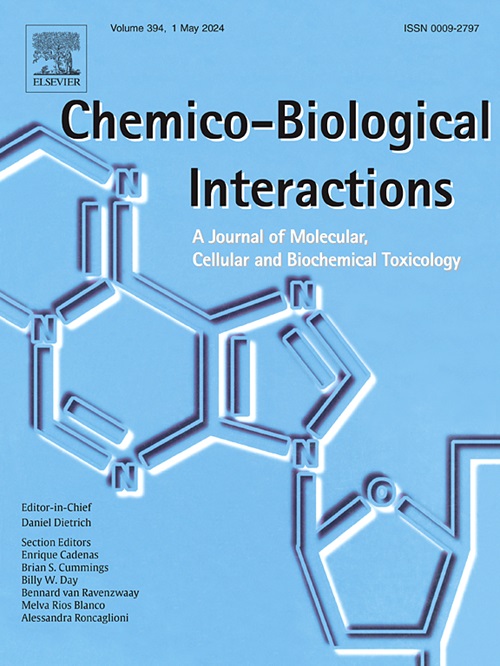Prenatal caffeine exposure contributes to adrenal dysfunction of progeny for sex-specific and its 11β-hydroxysteroid dehydrogenase system intrauterine programming mechanism
IF 5.4
2区 医学
Q1 BIOCHEMISTRY & MOLECULAR BIOLOGY
引用次数: 0
Abstract
Our previous study has confirmed that the occurrence of fetal-originated disease is related to the changes in the developmental programming of adrenal in offspring. The aim of this study was to investigate the effects of prenatal caffeine exposure (PCE) on adrenal developmental programming in offspring rats and the underlying mechanisms. Here, PCE inhibited adrenal morphology and steroidogenic function in female and male offspring, and the suppression persisted in female offspring up to postnatal week 28 (PW28), while no significant changes in male offspring. Besides, adrenal 11β-hydroxysteroid dehydrogenase type 2 (11β-HSD2) expression was consistently decreased from intrauterine to PW28 in PCE female offspring, while it was decreased in male fetal offspring without significant change in PW28. Meanwhile, the adrenal 11β-HSD2 expression in PCE female offspring was positively correlated with developmental parameters. To explore its intrauterine origin, we found that PCE could elevate serum corticosterone levels in fetal rats. At the cellular level, high concentration of cortisol could inhibit 11β-HSD2 expression, and 11β-HSD2 overexpression could reverse the inhibition of steroidogenesis induced by cortisol. Further, we confirmed the epigenetic mechanism of the reduced adrenal 11β-HSD2 expression in PCE female offspring. On the one hand, high level of intrauterine glucocorticoid induced by PCE could lead to the decrease of H3K14ac level and expression of 11β-HSD2 through GR/HDAC4 pathway, which could last until birth. On the other hand, caffeine could decrease 11β-HSD2 expression through A2AR/cAMP/PKA signal, which synergistically enhanced the inhibitory effect of corticosterone on H3K14ac level and expression of 11β-HSD2. In conclusion, PCE could cause adrenal hypoplasia in female offspring, which was related to the low functional programming of 11β-HSD2 caused by the combination of high levels of glucocorticoids and caffeine.
产前咖啡因暴露对后代性别特异性肾上腺功能障碍及其11β-羟基类固醇脱氢酶系统宫内编程机制的影响
我们前期的研究证实了胎源性疾病的发生与子代肾上腺发育程序的改变有关。本研究的目的是探讨产前咖啡因暴露(PCE)对后代大鼠肾上腺发育程序的影响及其潜在机制。在这里,PCE抑制雌性和雄性后代的肾上腺形态和类固醇生成功能,并且雌性后代的抑制持续到出生后28周(PW28),而雄性后代没有明显变化。此外,肾上腺11β-羟基类固醇脱氢酶2型(11β-HSD2)在PCE雌性子代中从宫内到PW28的表达持续下降,而在PCE雄性子代中表达下降,PW28无显著变化。同时,PCE雌性后代肾上腺11β-HSD2的表达与发育参数呈正相关。为了探讨其宫内起源,我们发现PCE可以提高胎鼠血清皮质酮水平。在细胞水平上,高浓度皮质醇可抑制11β-HSD2的表达,11β-HSD2过表达可逆转皮质醇对类固醇生成的抑制作用。进一步,我们证实了PCE雌性后代肾上腺11β-HSD2表达降低的表观遗传机制。一方面,PCE诱导的高水平宫内糖皮质激素可通过GR/HDAC4途径导致H3K14ac水平和11β-HSD2表达降低,并持续到出生。另一方面,咖啡因可通过A2AR/cAMP/PKA信号降低11β-HSD2的表达,协同增强皮质酮对H3K14ac水平和11β-HSD2表达的抑制作用。综上所述,PCE可导致雌性后代肾上腺发育不全,这与高水平糖皮质激素和咖啡因共同作用导致11β-HSD2功能编程低下有关。
本文章由计算机程序翻译,如有差异,请以英文原文为准。
求助全文
约1分钟内获得全文
求助全文
来源期刊
CiteScore
7.70
自引率
3.90%
发文量
410
审稿时长
36 days
期刊介绍:
Chemico-Biological Interactions publishes research reports and review articles that examine the molecular, cellular, and/or biochemical basis of toxicologically relevant outcomes. Special emphasis is placed on toxicological mechanisms associated with interactions between chemicals and biological systems. Outcomes may include all traditional endpoints caused by synthetic or naturally occurring chemicals, both in vivo and in vitro. Endpoints of interest include, but are not limited to carcinogenesis, mutagenesis, respiratory toxicology, neurotoxicology, reproductive and developmental toxicology, and immunotoxicology.

 求助内容:
求助内容: 应助结果提醒方式:
应助结果提醒方式:


